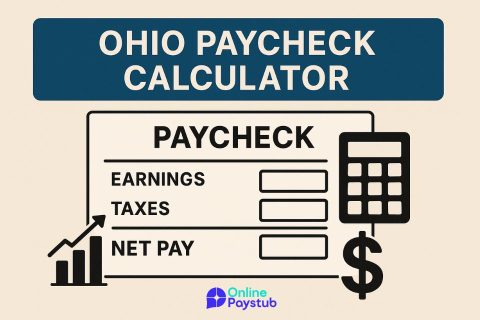Gross pay refers to the total amount of money an employee earns before any deductions are made. It includes all earnings from wages, salaries, bonuses, commissions, and overtime pay. Employers use gross pay as a foundational figure for calculating payroll taxes, employee benefits, and for reporting purposes to tax authorities. It’s typically the largest number shown on a paycheck, appearing before taxes and other deductions are subtracted.
Understanding gross pay is essential for both employees and employers. For employees, it sets the baseline for negotiations, budgeting, and financial planning. For employers, it ensures accurate payroll management and legal compliance with wage and labor laws.
Gross Pay Definition and Purpose
Gross pay is the total compensation an employee earns during a specific pay period or over the course of a year, prior to deductions. This figure includes fixed earnings such as base salary or hourly wages, as well as variable earnings like overtime, tips, and commissions. Gross pay plays a crucial role in calculating taxable income, determining benefits eligibility, and maintaining transparency in compensation.
Its primary purpose is to serve as a reference point for calculating withholdings such as income taxes, Social Security, Medicare, and contributions to retirement plans. Gross pay also helps lenders evaluate creditworthiness when reviewing loan or mortgage applications.
Common Components of Gross Pay
Gross pay can be made up of several elements depending on the employee’s job structure and compensation model:
- Base salary or hourly wages: The most consistent and predictable component.
- Overtime pay: Typically calculated at 1.5 times the hourly rate for hours worked beyond 40 in a week.
- Bonuses: Performance-based or end-of-year financial incentives.
- Commissions: Earnings based on sales or business generated, often used in sales roles.
- Tips and gratuities: Especially common in service industries.
- Holiday pay or shift differentials: Extra pay for working unsociable hours or public holidays.
All these contribute to the gross earnings reported on an employee’s pay stub or W-2 form.
Gross Pay for Salaried vs. Hourly Employees
The structure of gross pay varies significantly between salaried and hourly employees.
- Salaried employees receive a fixed annual amount, which is then divided by the number of pay periods (monthly, semi-monthly, biweekly, etc.). For example, someone earning $60,000 annually and paid monthly receives a gross pay of $5,000 per month.
- Hourly employees are paid based on the number of hours worked in a given pay period. Their gross pay is calculated by multiplying the hourly rate by the total hours worked. Overtime or shift differentials may also apply.
Salaried positions often offer predictability, while hourly roles offer flexibility and potential variability depending on hours worked.
Examples of Gross Pay Calculations
- Salaried Example: An employee with an annual salary of $48,000 paid twice a month would have a gross pay of $2,000 per pay period ($48,000 ÷ 24).
- Hourly Example: An employee earning $18 per hour who works 40 hours in a week would receive a gross pay of $720. If they work 5 overtime hours at 1.5x rate, they’d earn an additional $135, making the total gross pay $855.
- Commission-Based Example: A salesperson with a 10% commission rate who makes $15,000 in sales during a period would earn a gross pay of $1,500.
What Is Net Pay?
Net pay, often referred to as “take-home pay,” is the actual amount of money an employee receives after all deductions have been subtracted from their gross pay. This is the amount deposited into the employee’s bank account or issued via paycheck. While gross pay reflects the total earnings, net pay reflects what is left once taxes, benefits, and other withholdings are accounted for.
For employees, net pay is the most important figure for day-to-day financial planning, as it determines their actual income. For employers, calculating net pay accurately is essential to maintain compliance with tax laws and ensure employee satisfaction.
Net Pay Definition and Meaning
Net pay represents an employee’s earnings after deductions such as taxes, Social Security, Medicare, health insurance premiums, retirement contributions, and wage garnishments. It is the final figure on a pay stub and reflects the money available for personal expenses, savings, or investments.
In essence, net pay = gross pay – all applicable deductions. Understanding this figure helps employees evaluate their compensation, prepare budgets, and plan their financial future effectively.
Deductions That Impact Net Pay
Several types of deductions can affect net pay, and these can vary depending on employment type, location, and individual elections. The most common ones include:
- Federal income tax: Based on the employee’s filing status, income level, and W-4 elections.
- State and local taxes: Not all states levy income taxes, but for those that do, the rates can significantly affect net pay.
- FICA taxes: These include Social Security (6.2%) and Medicare (1.45%), both of which are withheld from gross earnings.
- Health insurance premiums: Employee contributions to employer-sponsored plans.
- Retirement contributions: Pre-tax contributions to plans like 401(k)s reduce taxable income.
- Wage garnishments: Court-ordered deductions such as child support, alimony, or debt repayment.
These deductions are applied in a specific order and are regulated by both federal and state labor laws.
Voluntary vs. Mandatory Payroll Deductions
Understanding the difference between voluntary and mandatory deductions is key to interpreting net pay:
- Mandatory deductions are legally required and include federal and state income taxes, Social Security, and Medicare. Employers must withhold these regardless of employee preference.
- Voluntary deductions are optional and authorized by the employee. These may include contributions to retirement plans, health and dental insurance premiums, union dues, or flexible spending accounts.
While mandatory deductions are non-negotiable, voluntary deductions can often be adjusted to increase take-home pay or boost long-term savings.
Examples of Net Pay Calculations
- Salaried Example: An employee with a monthly gross salary of $5,000 who has $1,200 in total deductions (taxes, insurance, and 401(k) contributions) will receive a net pay of $3,800.
- Hourly Example: An hourly employee earning $18/hour for 40 hours a week makes $720 gross. After $100 in federal tax, $55 in FICA, and $45 in insurance contributions, the net pay would be $520.
- Commission Example: A salesperson earning $1,000 commission with $300 total deductions takes home $700 as net pay.
These examples help clarify how deductions directly affect the final amount received.
Comparison Table: Gross vs. Net Pay
| Feature | Gross Pay | Net Pay |
|---|---|---|
| Definition | Total earnings before deductions | Earnings after deductions |
| Appears on pay stub as | Highest amount | Final take-home amount |
| Includes | Base pay, bonuses, commissions | What’s left after taxes/deductions |
| Used for | Tax calculations, loan approvals | Budgeting, savings, daily expenses |
| Affected by | Hours worked, salary rate | Taxes, benefits, withholdings |
Why the Difference Matters to Employees and Employers
For employees, the distinction helps in budgeting, comparing job offers, and understanding financial obligations. A high gross salary may seem attractive, but if deductions are significant, the net pay may be underwhelming.
For employers, understanding and clearly communicating gross vs. net pay helps foster trust and ensures payroll compliance. It also supports transparent compensation discussions, especially during hiring or promotion negotiations.
How to Calculate Gross and Net Pay
Accurately calculating gross and net pay is crucial for both payroll professionals and employees. Whether you’re paid hourly or salaried, knowing how your earnings are calculated can help you plan your finances and ensure your paycheck is correct. Below are step-by-step guides tailored to different types of employment, along with an overview of how bonuses, overtime, and commissions influence pay.
Step-by-Step Guide for Hourly Employees
- Determine hourly wage: Identify your hourly pay rate, which is the base amount you earn per hour worked.
- Track hours worked: Record all hours worked during the pay period. Don’t forget to include overtime, if applicable.
- Calculate gross pay:
- Standard hours: Multiply the hourly rate by the number of hours worked.
Example: $18/hour × 40 hours = $720 gross pay - Overtime: Multiply overtime hours by the overtime rate (typically 1.5× hourly wage), then add to regular pay.
Example: $18 × 1.5 = $27/hour for overtime
5 overtime hours = $135
Total gross pay = $720 + $135 = $855
- Standard hours: Multiply the hourly rate by the number of hours worked.
- Deduct taxes and withholdings: Subtract federal income tax, state/local taxes, Social Security, Medicare, and any voluntary deductions like insurance or 401(k).
- Arrive at net pay: The remaining amount after all deductions is your net pay.
Step-by-Step Guide for Salaried Employees
- Identify annual salary: Start with your agreed annual salary (e.g., $60,000).
- Determine pay frequency: Divide the annual salary by the number of pay periods (monthly = 12, biweekly = 26, etc.).
Example: $60,000 ÷ 12 months = $5,000 gross pay per month - Apply bonuses or additional income (if applicable): Add any bonus, stipend, or reimbursement to the gross pay for that period.
- Deduct taxes and withholdings: Subtract applicable payroll taxes and deductions. For example, federal income tax, FICA, health insurance premiums, and retirement contributions.
- Result is net pay: After all deductions, the final amount is your take-home pay.




No comments to show.